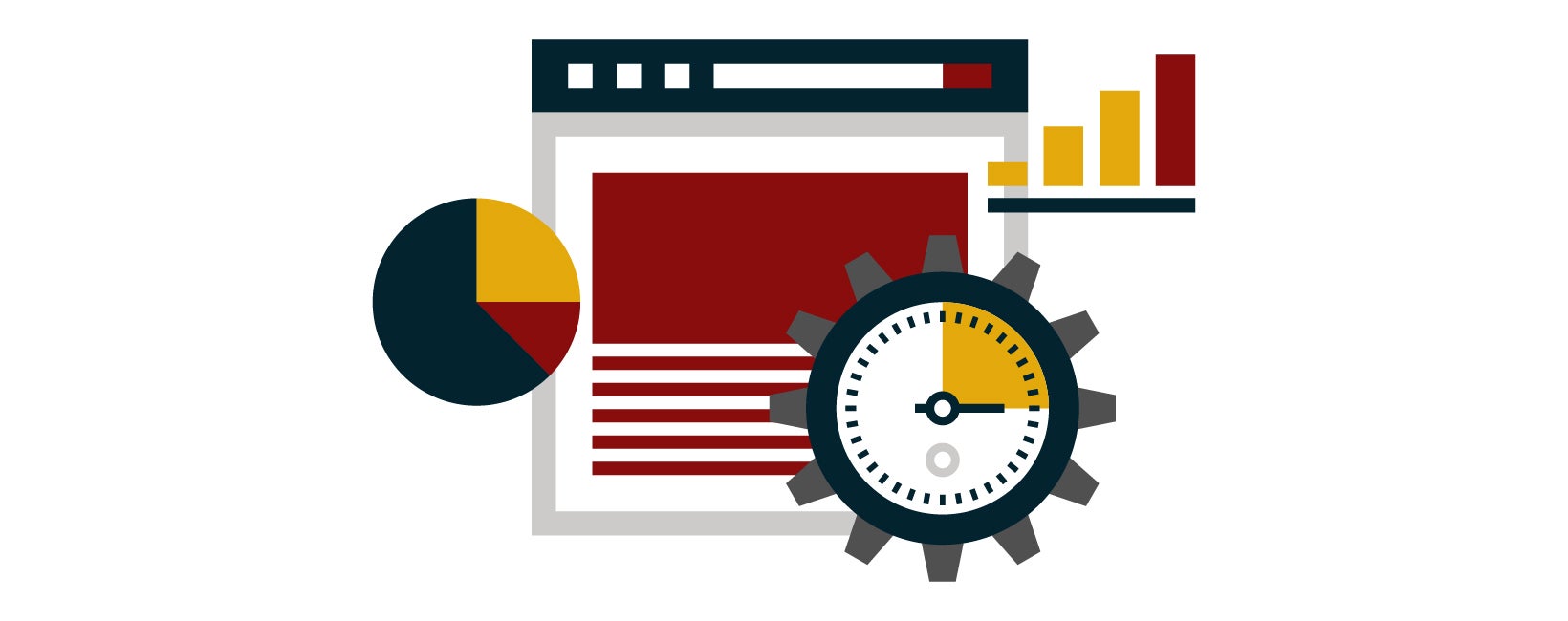 May 03, 2022
Persona
May 03, 2022
Persona
As a higher education–focused agency and Google Premier Partner, Carnegie has unmatched access to higher ed digital media data that allow us to see trends, form insights, then adapt our best practices or optimize our client campaigns accordingly. Coming off the heels of a pandemic that greatly affected prospective student behavior and now facing user privacy headwinds that are guaranteed to only become more difficult to navigate, utilizing these data and trends is more important than ever. Read on to learn about the trends we’re seeing and considerations for your response to these trends.
Google Search trends
Numerous studies have been published showing an inverse correlation between the health of the economy and demand for higher education—when the economy and job market are hot, there’s less demand for advanced degrees and fewer people consider completing their degree. The opposite is true when there’s economic uncertainty or when unemployment is increasing. Google Search data confirm this theory—throughout 2020 and early 2021, education-and degree-related searches slowly rose. Of course, searches specifically for online degrees and colleges spiked as most people across the country were staying home.
However, as the economy quickly rebounded and hiring demand increased starting in Q3 of 2021, education searches reversed course and have declined YoY:
- Searches for graduate programs in Q3 2021 were down 8% YoY and were down 11% for Q4.
- Undergraduate program searches were down 20% in Q3 2021 YoY.
Looking at Q1 2022, demand is stabilizing but still not recovering:
- Graduate searches are relatively flat with just a 1% growth rate.
- Undergraduate program searches are down just 3%.
In addition to this volatility in higher education demand, there are unprecedented levels of competition among higher ed advertisers on Google as more institutions get into the game or increase their budgets. The pandemic exacerbated this trend as out-of-home advertising budgets were reallocated to digital mediums to better reach prospective students where they were spending more of their time—at home. Google uses Ad Depth to measure competition levels—Ad Depth is simply the average number of paid search ads shown whenever a user’s search triggers an ad to be shown. We can see the increase in competition here:
- In Q3 2021, Ad Depth increased an astonishing 48%—up to 3.7—for undergraduate program searches.
- Graduate program searches increased 6% YoY to 4.0.
- Q4 saw a 7% YoY increase but remained steady quarter over quarter at 4.0.
- Q1 2022 showed some normalization.
Simply put, if your institution is advertising its programs on Google Search, you’re competing against an average of three other institutions every time your ad shows. If you aren’t advertising on Google, even if you’re the #1 organic listing, there are likely four paid listings pushing you further down the search engine results page.
Paid search competition’s effect on organic search
One may think that because overall education-related searches are declining YoY that clicks on ads must be declining too—but that’s not the case. Remember the earlier stat from Q3 2021 where undergraduate program searches were down 20% YoY and competition was up 48%? Well, in that same quarter, clicks on ads were up an astounding 17%. So with decreasing search queries and now a higher percentage of prospective student clicks going to paid ads vs. organic listings, this can have a devastating effect on organic search. More than ever, Google Search is becoming “pay to play” and driving CPCs up.
Digital privacy restrictions and their effect on Facebook campaign performance and measurement
It’s been almost one year since Apple rolled out iOS 14.5 and the groundbreaking user privacy restrictions and digital campaign measurement challenges that came with it. Also, within the last year, Meta added restrictions for the targeting of users under 18 on its Facebook and Instagram platforms after facing pressure from teen advocacy groups.
At Carnegie, we do our benchmarking on a quarterly basis to look at data during the different cycles of a typical higher ed year. Over this past year, it’s become clear that these restrictions have had the largest impact on Facebook and Instagram campaigns. Traditional undergraduate campaign performance has been hit the hardest. Undergraduate campaigns in Q2 and Q3 of 2021 saw some of the highest click-through rates (CTRs), but Q4 was our first full quarter with these new targeting restrictions, and CTRs dipped to their lowest point since we started keeping benchmarks. Conversely, graduate, parent, and transfer campaigns are seeing the highest recorded CTRs over the same two quarters.
LinkedIn isn’t just for graduate audiences
LinkedIn is a tried-and-true place for advertising graduate programs, especially business-focused ones, but it’s becoming increasingly competitive and expensive for those obvious choice programs like MBA, MSBA, MSF, etc. One audience that isn’t always considered for advertising on LinkedIn but is performing well is non-traditional undergraduate. Campaigns targeting this audience are seeing CTRs 12%–15% higher than graduate ones and CPAs 10%–30% lower, resulting in more potential ROI.
Looking ahead
When evaluating your Google Search strategy for the upcoming year, take the following into consideration:
- Do you have an organic search strategy as part of your overall search strategy? If not, it’s more important than ever to create one to increase your site’s visibility, given the increased competition on paid search.
- If you do have an organic search strategy, how effective has it been over the past year? With a larger percentage of higher education–focused searches leading to clicks on paid results, institutions have to fight harder to ensure they’re targeting the right keywords, their content is compelling and relevant, and their websites are healthy. To fight harder, we recommend evaluating your keyword strategy, developing a content strategy that includes keywords with high relevance for your audience to ensure you’re getting more visibility, assessing your site speed, and fixing technical issues like 404 errors, missing metadata, and duplicate content.
- Keep an eye on your Auction Insights report in Google Ads and determine if you’re spending enough or not. If competitors’ ads are showing more frequently and are ranking higher than your own, you may want to consider increasing your spend if you’re seeing positive ROI.
When evaluating your Facebook and Instagram strategy, consider:
- New audience opportunities: Targeting parents of high school–aged students on Facebook and Instagram is proving to be an excellent strategy. Many institutions are adding parent social strategies to their mix to influence the undergraduate audience indirectly.
- New platforms: Time spent on Snapchat and TikTok by high school students is continuing to increase, and both platforms have the targeting capabilities to reach those audiences. For non-traditional undergraduate students, LinkedIn is another option that works!
It’s becoming easier every year to spend significant money in digital advertising, and harder to ensure your record-high digital budget is spent effectively on optimized campaigns with measured results. We hope sharing the data we’ve gathered helps you navigate this landscape. Check out our resources page for more digital marketing content and if you find you’re in need of additional support to maximize your digital advertising efforts, we have a team of experts ready to jump in with you. Let us know how we can help—reach out anytime.
